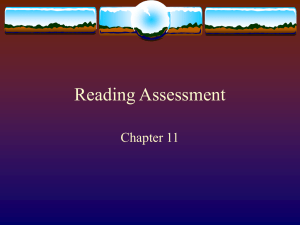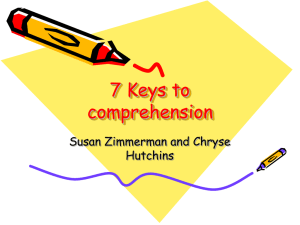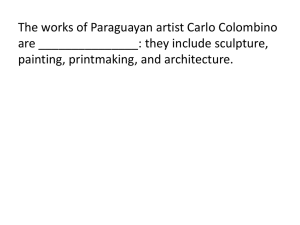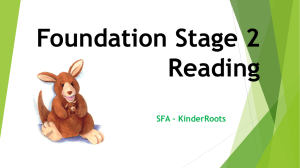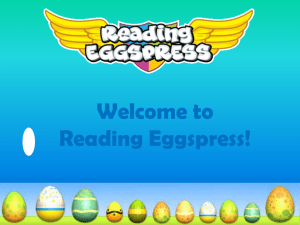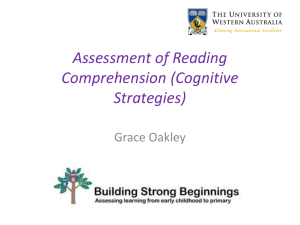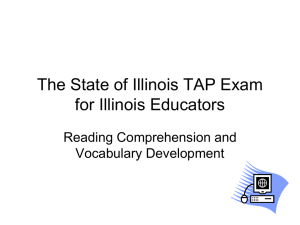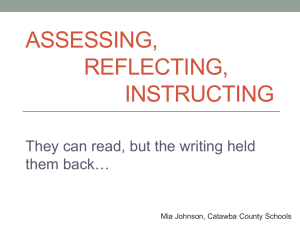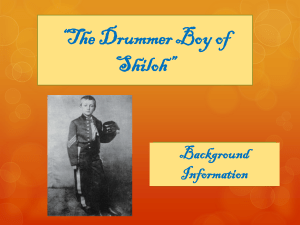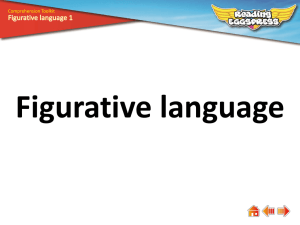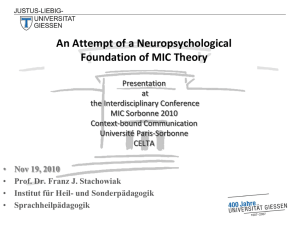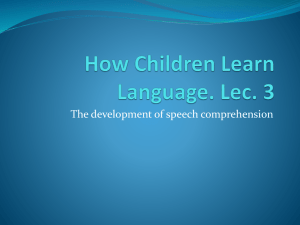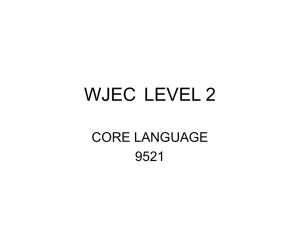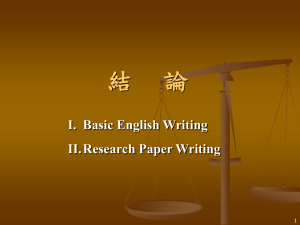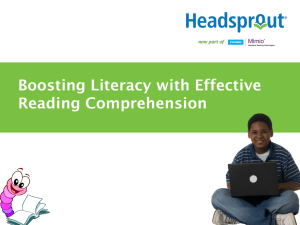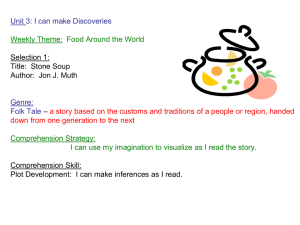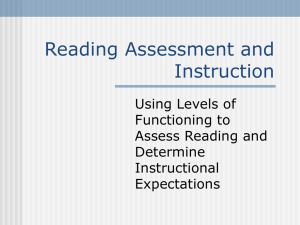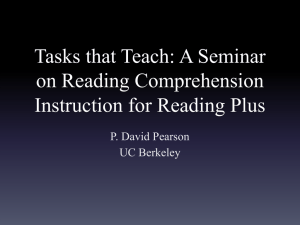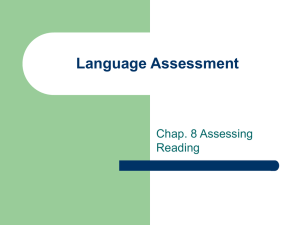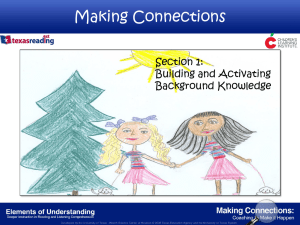File - Mr. Baran PVMHS
advertisement
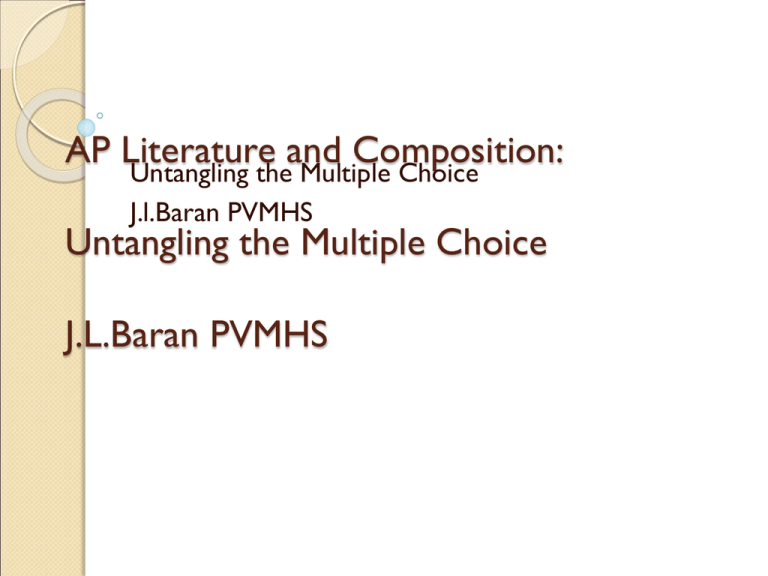
AP Literature and Composition: Untangling the Multiple Choice J.l.Baran PVMHS Untangling the Multiple Choice J.L.Baran PVMHS Our Goals… Test Overview 10 min Tips and Strategy 15 min Practice 25 min Deconstruction 20 min Questions 5 min Total 75 min Test Format 60 min long 4-5 sections 55-60 questions Poetry and Prose, Fiction and Non Fiction 300-700 word sections Material before 1900 (the old stuff) Material after 1900 (the new stuff) 12-15 questions in each section Questions are Content, Style, and Structure Questions will follow a linear order However entire passage questions can be sporadic You may be given footnotes Did You Know... That you can get ½ the multiple choice wrong and still obtain a qualifying score? Multiple Choice is 45% of your score? You are not penalized for what you get wrong, but rewarded for what you get correct? Best Bet Tips: Please repeat after me… I will cross out wrong answers I will start with the easiest passage I will end with the hardest passage I will watch out for questions that take time: Roman Numeral, Least, Except I will check my time and wear a watch I should be in the middle @ 30 min I will mark any rhetorical shifts usually identified with conjunctions such as But, Although, Since, etc I will circle footnotes and titles I will use a ? And go back later I understand that questions may give a feel for the piece I will not trust my memory and go back I will read above and below lines I will understand that all questions follow the order of appearance; nothing is out of sequence How to Look at Prose Be active with your pen Try to picture the passage in your mind Note the number of paragraphs Look for Transition Words Look for Shift = movement to a new direction Pay attention to special punctuation – it may mean something. Pay attention to sentence structure – it may also mean something Note the Point of View, 1st or 3rd Is the language formal or informal? How to Look at Poetry: it helps to be good at the following: The situation, story, logic, argument Author’s attitude or Tone of the piece Punctuation, or lack there of Enjambment Imagery, especially if they form a pattern Metaphorical devices Figurative vs Literal Know your basic forms lyric, ballad, sonnet, ode, elegy, dramatic monologue, lament Know some basic sound devices, alliteration, assonance, rhyme* (there is more than one type) onomatopoeia Most English poetry is written in iambic pentameter All Questions fall into 4 categories. 1. Comprehension 2. Device 3. Effect 4. Grammar Time to Practice You will have 15 min to read and answer questions After, consult with friends and make some final selections Conrad: Narcissus Answers Question type 35. 36. 37. 38. 39. 40. 41. 42. 43. 44. 45. A B C C B B B E E C B ________________ ________________ ________________ ________________ ________________ ________________ ________________ ________________ ________________ ________________ ________________ Dylan Thomas: Man Aged Answers 20 C 21 D 22 C 23 E 24 D 25 D 26 C 27 B _____________ ___ 28 B 29 B 30 E 31 D 32 C 33 A 34 A Conrad: Narcissus Answers Question type 35. 36. 37. 38. 39. 40. 41. 42. 43. 44. 45. A B C C B B B E E C B Comprehension Comprehension/Effect Effect Device/Comprehension Device Comprehension Comprehension Effect Comprehension Device Device Man Aged Question type 20 Comprehension 21 Comprehension 22 Effect 23 Comprehension 24 Device 25 Comprehension 26 Comprehension 27 Device 28 Comprehension 29 Comprehension 30 Comp/ device 31 Effect 32 Device 33 Comprehension 34 Device

